
Catalogue Information
Title: Vegetable substances used for the food of man.
Author: Attributed to Dr. Edwin Lankester (1814 – 1874)
Publisher: London: Charles Knight, Pall Mall East, 1832.
Printer: London: William Clowes, Stamford Street, [1832].
Series: The Library of Entertaining Knowledge
Pagination: [3], vi, [1], viii, 396, [4] pages
Illustrations: 67 numbered and labelled illustrations
MSU Library Call Number: SB175 .L36 1832
Physical Description



Vegetable substances is a copy measuring about ~17 cm, with marbled paper covering the boards, and smooth black leather on the spine and corners. The spine also features gilt lettering and tooling. Both the spine and centers/outer edges of the boards display a significant amount of wear, indicating a lot of handling. The front and back boards are each loosened from the spine.


The paper used thin, cream colored, and wove, with discoloration on the edges and foxing throughout. This copy is missing the first flyleaf and the first printed leaf, which would have the following text:
Published under the superintendence of the Society for the Diffusion of Useful Knowledge. The Library of Entertaining Knowledge. Vegetable substances used for the food of man.
Source: https://archive.org/details/vegetablesubstan00lank/page/n3/mode/2up
on the recto and a list of committee members on the verso.
Other than the table of contents and the list of illustrations, there is a small errata section (though not labelled as such) with information on a note missing from the text. This copy has no index, register, and does not use catch words. Each page does have a headline with the abbreviated title – Vegetable substances – or the chapter title, and footnotes are frequently employed to reference sources and provide additional information. There is a colophon on the last printed page which reiterates the printer’s information.
The signature marks are B-2L6, and in more than one spot, it is possible to see the signatures separating and the thread used to bind the textblock, which continues contributing to the idea that this book has seen heavy use.
There are not all that many marks of use outside of wear and tear. The pencil marks that are present cannot be attributed to any one owner. There are few lines in the margins, what looks like a pencil test or symbol to make note of, a dog-eared page, a scorch mark, a few stains, and what may possibly be a price-code on the title page (250 – Hicks – 3rd). There is also one instance of the word ‘turnip.’






On the Printer & Publisher
The Society for the Diffusion of Useful Knowledge was active from roughly 1826 – 1846 and was founded by radical Whig MP Henry Brougham and a number of his peers who sought to reform education. The driving goal was to provide inexpensive instruction on scientific and artistic subjects to those who could not afford education or those who preferred to self-teach. In others, mass readership for the middle and lower classes1.
The Library of Entertaining Knowledge was a series started in 1829 as a counterpart and complement to the Library of Useful Knowledge, with an emphasis on entertainment and amusement rather than strict instruction. Copies were generally sold for 4s. 6d. and at one point the series was at a monthly circulation of 20,000 copies2. When it ceased publication in 1838, there were 39 volumes3,4.
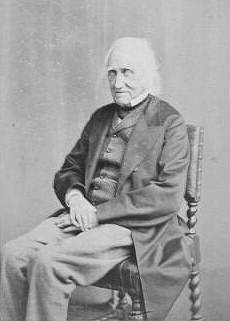
A photograph of Charles Knight, around 1860.
Charles Knight, born 1791 in Windsor, was the son of a bookseller and printer, with whom he apprenticed5. He was a major proponent of producing inexpensive, high-quality literature for everyone, but also the now literate working class. This ideal meshed very well with the SDUK’s mission, and in 1827, Knight was appointed to publish and edit for the Society until its dissolution6. Specifically, the Library of Entertaining Knowledge was the main joint venture.
In addition to being an author, publisher, and editor, Knight was also a printer, and produced many illustrated editions of popular works, like Shakespeare5. It is very much due to his efforts that mass market literature exists as it does – and Vegetable substances is one of many that contributed to his success6. He died in 1873, at 81, and is buried in Windsor.
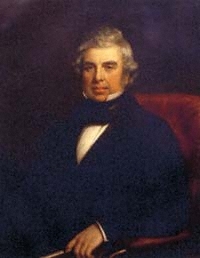
William Clowes was born in 1779 to a pair of schoolteachers7 in Chichester, Sussex. A very close friend of Charles Knight, Clowes became the chief printer for the Society for the Diffusion of Useful Knowledge1. What made his career so notable is that, not only did he employ the largest number of compositors in his print shop, in the world, but he was also very instrumental in the creation of mass market literature. This is because he was the first individual to exploit the high-speed steam-powered printing press, to the point of printing no fewer than 725,000 sheets a week. This rounds to about 30,000 volumes9. He died in 1847, at the age of 68, and is buried in West Norwood Cemetery8.
A Note on the Author
Someone wrote in Dr. Edwin Lankester (1814 – 1874) as the author of this text, and certainly there are other editions with his name on it. However, those other editions 1. Do not have any mention of either the Society for the Diffusion of Useful Knowledge or the Library of Entertaining Knowledge; and 2. Those were published starting in the 1840s, nearly a decade after. While it is certainly within the realm of possibility that he authored this specific text – and he did eventually publish with the SDUK’s Penny Cyclopaedia in medicine, botany, and surgery10, as well as hold a professorship in Natural History12 – not only was he only 18 at the time of Vegetable substances’ first publication, but he would not go on to get an education in medicine and science until 183410.
Thus, I hold more than a bit of skepticism. There is also the issue of the following editions (~1845-7) and later being occasionally attributed to Edwin Lankester’s son, Edwin Ray Lankester, who was either two years not yet born, or months old11. Either way, I do not think either one wrote the 1832 edition of Vegetable substances.
Contents


The content resides at an intersection of Natural History and cookery, though it does not seem to contain any recipes. Rather, it discusses the history of certain plant groups and their usage in agriculture and in food.
“We propose, as far as can be accomplished within narrow limits, to trace the progress of our own country towards one of the chief objects and indications of civilization, – that of obtaining an abundance and variety of wholesome and agreeable vegetable food, at the cheapest rate, and with unfailing regularity, for increasing inhabitants. This great object is principally accomplished by the natural progress of a people in knowledge and industry.”
Vegetable substances used for the food of man, page 5, B3r
Thus, it covers and employs the use of:
- history of agriculture, gardening, and commerce
- vegetable physiology
- practical agriculture and horticulture
- discussion of soil quality
- the importance of bread
- how these vegetables factor into daily food consumption
In a broader context, Vegetable substances functions to further several interconnected movements. Its first and foremost purpose, via the SDUK and Library of Entertaining Knowledge, is to provide education and entertainment on the subject of Natural History to the general public. Via its printer and publisher, it serves to contribute to the establishment of mass market literature and readership, and is one of the many books published during the veritable explosion of printing that was occurring at the time.
History of Ownership
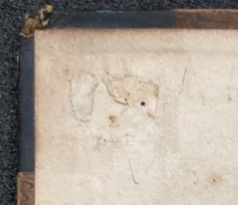

There are two stickers on the front and back pastedowns that I was unable to identify. The sticker on the front pastedown, top lefthand corner, appears to be the same size as a price sticker; The sticker on the back pastedown, also in the top lefthand corner, has the words ‘The White House’ and what appears to be a series of letter/numbers. I did initially look into the possibility that this book belonged to the White House Library, but was unable to find confirmation that Vegetable substances belonged to any of the formal iterations of the White House Library.
Julia Perrin Hindley
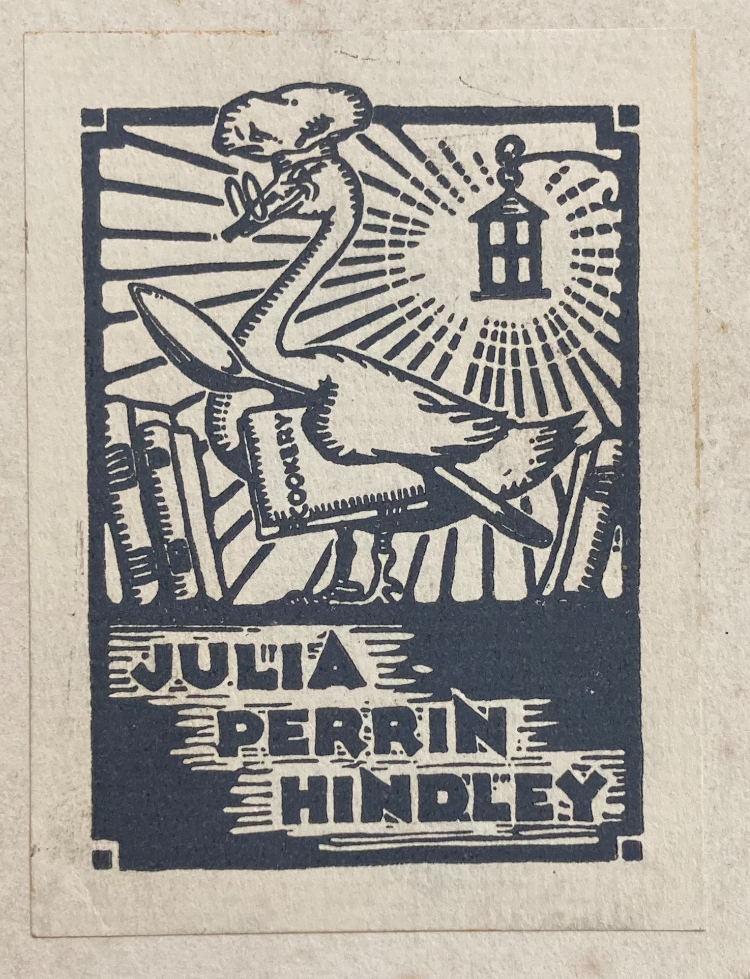
Julia Perrin Hindley was born 1901 and lived in San Francisco, California. At the age of 23, she married her husband, Phillip Hindley13. In 193014, she became the director of Safeway’s Homemaker’s Bureau as a Home Economist, under the stage name Julie/Julia Lee Wright – while I do not know where, I do know that she at least completed her second year of college15 – and was a TV and radio personality. She would also function as a columnist, as people could write to her with questions about food, recipes, etc. During her 18 years at Safeway16, she would publish numerous homemaking and cookery books17, and would frequently host and participate in events, as evidenced by mentions in the LA Times14. She was active until her death in 1966, at the age of 65. Based on her job, it is likely that she had Vegetable substances in her possession between 1930 and 1966, but no actual date is listed. Her bookplate is in the center of the front pastedown.
The Corner Book Shop
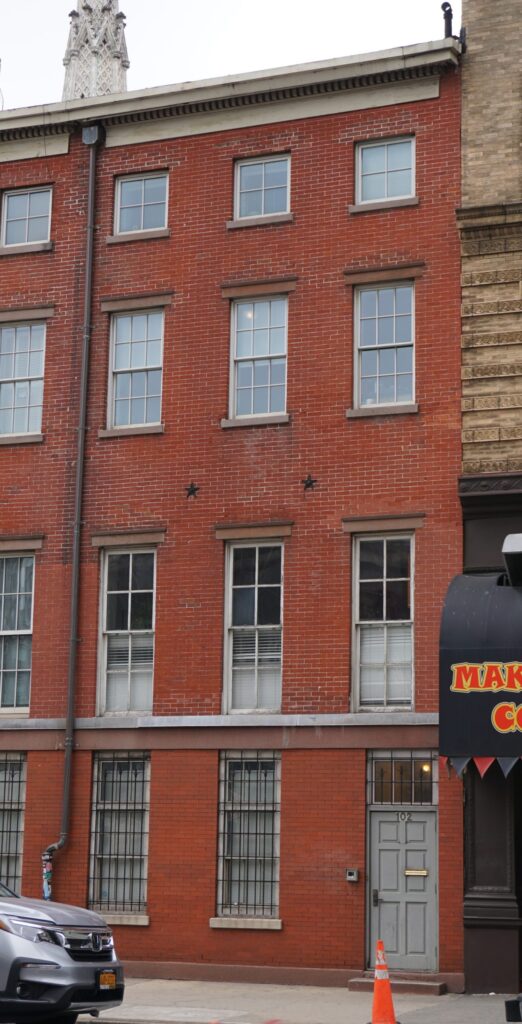
The Corner Book Shop located at 102 Fourth Avenue and in operation from 1940 – 1980, was the second last bookshop remaining of ‘Book Row,’ a section of New York filled to the brim with various booksellers21. Founded by Elanor Lowenstein (born 1909, died 1980), the book shop specialized in books about food, cookery, wine, and gastronomy – but also hosted a variety of other topics. During her time as an antiquarian, Lowenstein developed expertise in cookbooks and cooking history, to the point where she edited and revised the bibliography American Cookery Books by Waldo Lincoln twice, which was then published by the American Antiquarian Society20. She married her former mentor Walter Goldwater in 1954, who opened the University Place Book Shop on Book Row21. Prior to opening her bookshop, she graduated from Cornell in 1929 and was a social worker20. While it is certainly possible that Julia Perrin Hindley purchased Vegetable substances from the Corner Book Shop, the time is better accounted for with the idea that the Corner Book Shop acquired this text sometime around 1966, after Hindley died. The sticker for the bookshop is located on the front pastedown, in the bottom righthand corner.
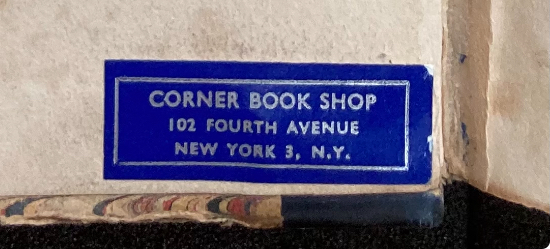
The Wine & Food Library
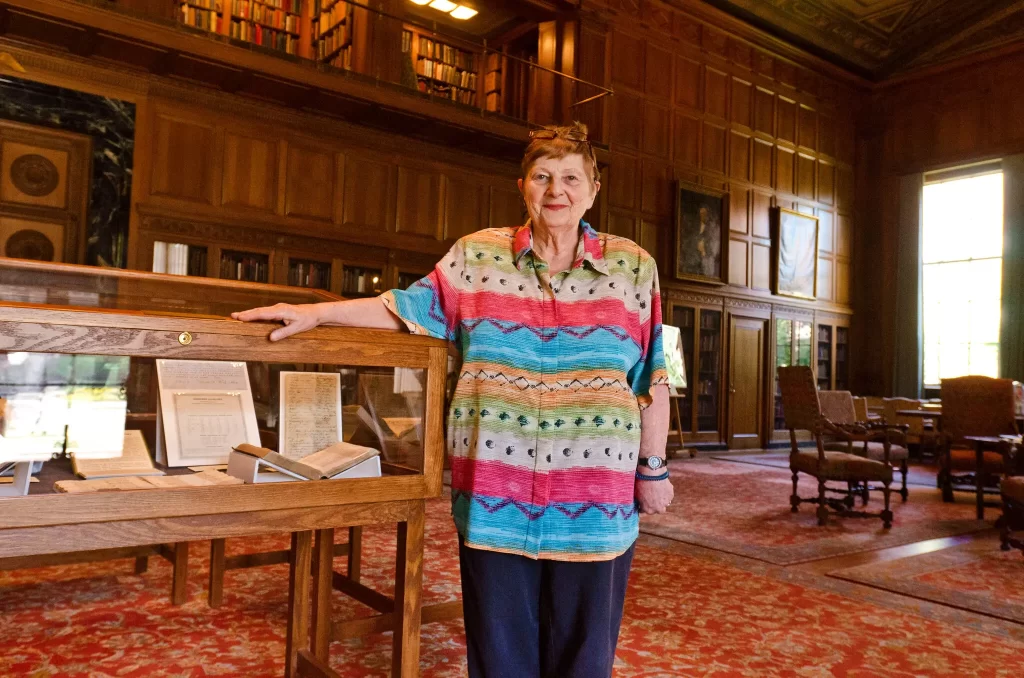
The Wine and Food Library was a mail-order bookshop located in Ann Arbor, MI and founded in 1972 by Janice Bluestein Longone. The collection, eventually donated to the University of Michigan, was over 25,000 books related to food, wine, and cookery. Jan Longone was born in 1933 in Boston, to an immigrant family. She graduated from Bridgewater State Teachers College with a bachelors in history, and from Cornell with a degree in Chinese history. Longone managed to combine her enjoyment of cooking with her interest in history and interpret the latter through the lens of the former22.
It is the Wine and Food Library that has been massively influential for researcher, librarians, chefs, and the general restaurant culture in the 1970s and 80s. The collection has been lauded as one of the most extensive antiquarian culinary resources, and through this Longone managed to become one of the foremost experts on American cooking. She died in 2022, at the age of 8923.
Based on the opening of the Wine and Food Library, it is safe to say that Longone acquired Vegetable substances some time after 1972, possibly directly from the Corner Book Shop or when the remaining books were sold off after Lowenstein’s death. The sticker is on the back pastedown, in the bottom lefthand corner. With the knowledge of who donated Vegetable substances, the book left the Wine and Food Library sometime before 2009.
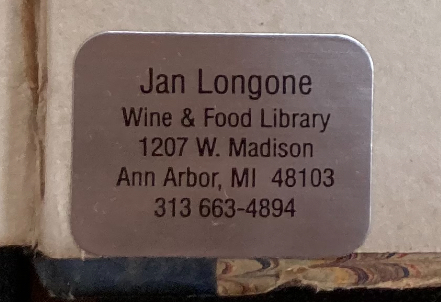
Donna Lou McDaniel née Dixon
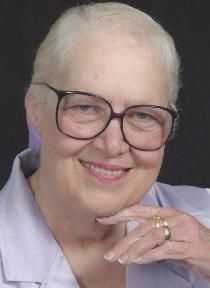
Donna Lou Dixon was born May 1936 in Flint, Michigan, and appeared to have stayed in the area her entire life.
She married Norman McDaniel at the age of 20 in 195624, and worked as an accountant for Genesee Township, MI. An extremely active part of the community, Donna participated in the Calvary Presbyterian Church, the Goodwill Auxiliary, Friends of the Flint Public Library, and Friends of the Kettering University Library and Archives25.
Donna was incredibly enthusiastic about both cooking and cookbooks, and in 2013 she donated the entirety of her 8,000 cookbook collection to Michigan State University, which had the effect of nearly doubling the size of the Cookery & Food Collection. This selection of hers covered all the way back to the 1760’s and was gradually amassed over several decade through estate sales and used bookshops across the country. This meant that a large portion of her collection was by local cooks and groups, to the point where she had the largest selection of Junior League cookbooks in the world26. However, when exactly she acquired Vegetable substances is unknown, just that it happened between 1972 (at the very earliest) and 2009. It’s very likely that her acquisition happened closer to the midpoint of this range, and less so the endpoints. Donna died at the age of 78, in September 2014, and is buried in Sunset Hills Cemetery in Flint25.
Michigan State University
Michigan State University acquired this copy of Vegetable substances in 2009 as a donation from Mrs. Donna Lou McDaniel, as indicated by a note in the Catalogue27. It is apart of the Murray & Hong Special Collections for library use only, under the Cookery & Food Collection, which currently houses over 25,000 cookbooks and food-related works28.
Sources
- https://www.oxforddnb.com/display/10.1093/ref:odnb/9780198614128.001.0001/odnb-9780198614128-e-59807#:~:text=24%20May%202008-,Society%20for%20the%20Diffusion%20of%20Useful%20Knowledge%20(act.,of%20his%20fellow%20educational%20reformers.
- https://www.oxfordreference.com/display/10.1093/acref/9780198606536.001.0001/acref-9780198606536-e-2844
- https://en.wikipedia.org/wiki/Library_of_Entertaining_Knowledge
- https://www.historyofinformation.com/detail.php?id=4750
- https://www.findagrave.com/memorial/33714106/charles-knight
- https://johnjburnslibrary.wordpress.com/2014/06/09/charlesknight/
- https://en.wikipedia.org/wiki/William_Clowes_(printer)
- https://www.findagrave.com/memorial/84959554/william-clowes
- https://www.historyofinformation.com/detail.php?id=4370
- https://en.wikipedia.org/wiki/Edwin_Lankester
- https://en.wikipedia.org/wiki/Ray_Lankester
- https://www.nationalgalleries.org/art-and-artists/66851/dr-edwin-lankester-1814-1874-professor-natural-history-new-college-london
- https://www.ancestrylibrary.com/discoveryui-content/view/92609129:6224?tid=&pid=&queryId=3bfea008a74488e3c5633cd80786419f&_phsrc=SJZ1&_phstart=successSource
- https://latimes.newspapers.com/newspage/379961830/
- https://www.ancestrylibrary.com/discoveryui-content/view/71377664:2442?tid=&pid=&queryId=3bfea008a74488e3c5633cd80786419f&_phsrc=SJZ1&_phstart=successSource
- https://www.worldradiohistory.com/Archive-Television-Magazine/Television-1951-04.pdf
- https://scua.uncglibraries.com/new-acquisitions-fall-2022/
- https://washingtondigitalnewspapers.org/?a=d&d=CATHNWP19330519.2.123&e=——-en-20–1–txt-txIN——-
- https://www.ancestrylibrary.com/discoveryui-content/view/256553873:62308?tid=&pid=&queryId=3bfea008a74488e3c5633cd80786419f&_phsrc=SJZ1&_phstart=successSource
- https://snaccooperative.org/view/5359790
- https://www.villagepreservation.org/2020/07/29/fourth-avenues-book-row-defines-an-era/
- https://www.nytimes.com/2022/08/13/dining/janice-longone-dead.html
- https://www.niefuneralhomes.com/memorials/janice-longone/4995837/
- https://www.ancestrylibrary.com/discoveryui-content/view/37747602:62209?tid=&pid=&queryId=e8d63666d4adec4b67de26d62c9a7e85&_phsrc=bRO1&_phstart=successSource
- https://obits.mlive.com/us/obituaries/flint/name/donna-mcdaniel-obituary?id=18308222
- https://web.archive.org/web/20140810091944/http:/img.lib.msu.edu/giving/insight/Insight_May2013.pdf
- https://catalog.lib.msu.edu/Record/folio.in00002943925?sid=4087884
- https://libguides.lib.msu.edu/cookbooks
Created by Kaelyn Hopton for MSU’s FS23 History of the Book (HST 475).